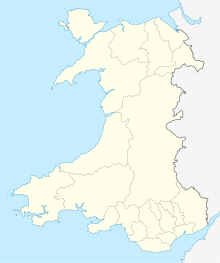This article has multiple issues. Please help improve it or discuss these issues on the talk page. (Learn how and when to remove these messages)
|
Glannau Rhoscolyn is a Site of Special Scientific Interest (or SSSI) in Anglesey, North Wales, and extends along the west coast of Holy Island, Anglesey for approximately 6.5 km (4.0 mi) (from Porthygaran to Silver Bay). It has been designated as a Site of Special Scientific Interest since January 1961 in an attempt to protect its fragile biological and geological elements.[1] The site has an area of 145.49 hectares (359.5 acres) and is managed by Natural Resources Wales.
| Site of Special Scientific Interest | |
| Location | West Gwynedd |
|---|---|
| Grid reference | SH2572175563 |
| Coordinates | 53°14′54″N 4°36′49″W / 53.24839°N 4.6135542°W |
| Interest | Biological and Geological |
| Area | 145.49 hectares (359.5 acres) |
| Notification | 1961 |
Type
editThis SSSI has been notified as being of both geological and ornithological importance.
The exposed coast around Rhoscolyn exhibit some of the finest examples of polyphase fold structures known in the south of Britain and are amongst the most intensively studied sites in the British Isles.
The spotted rock rose (Tuberaria guttata) is found here in two locations. Only nine populations of the spotted rockrose are known in the UK, a further six locations are also found on Anglesey with the remaining site on Pen Llŷn.
Among the birds found here are: the chough (Pyrrhocorax pyrrhocorax), for which the site is also selected, and the peregrine Falco peregrinus; others include: breeding shag (Phalacrocorax aristotelis), raven (Corvus corax) and kestrel (Falco tinnunculus), whitethroat (Sylvia communis), wheatear (Oenanthe oenanthe) and stonechat (Saxicola torquata).
See also
editReferences
edit- ^ Countryside Council for Wales website (Natural Resources Wales since 2013); Archived January 1, 2014, at the Wayback Machine accessdate: 30 December 2013
External links
edit
